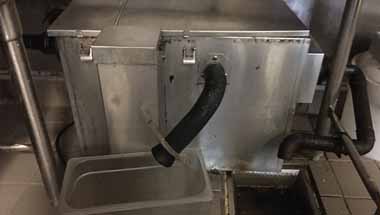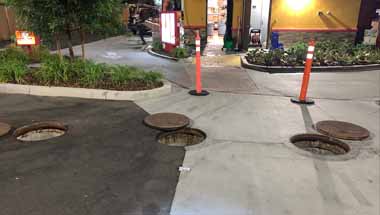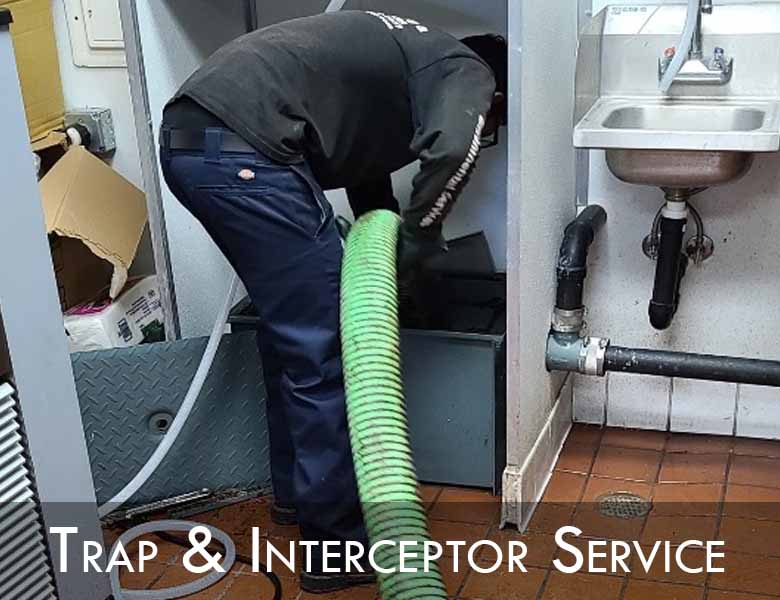Plumbing Service
Drain CleaningGrease Collection
Cooking Oil Recycling
Grease Trap Cleaning Service
All food servicing establishments must install either a  Grease Traps Are Typically Found Inside The Kitchen Above The Ground or Mounted Underground. Sizing For These Devices Are Will Range From 5-75 Gallons Which Is Why They Require Cleaning Every 4 To 6 Weeks on Average.grease trap or
Grease Traps Are Typically Found Inside The Kitchen Above The Ground or Mounted Underground. Sizing For These Devices Are Will Range From 5-75 Gallons Which Is Why They Require Cleaning Every 4 To 6 Weeks on Average.grease trap or  Grease Interceptors Are Large Gravity Devices That's Typically Found Outdoor Due The The Size. Grease Interceptor Sizes Can Range From 750 Gallons Up to 5,000 For An Average Commercial Kitchen. Larger Food Servicing Establishments or Shopping Malls May Have Larger Tanks Up To 40,000 Gallons.grease interceptor to prevent commercial kitchen fats, oils, grease, and solid food (FOGS) waste from entering the city sanitation system.
Grease Interceptors Are Large Gravity Devices That's Typically Found Outdoor Due The The Size. Grease Interceptor Sizes Can Range From 750 Gallons Up to 5,000 For An Average Commercial Kitchen. Larger Food Servicing Establishments or Shopping Malls May Have Larger Tanks Up To 40,000 Gallons.grease interceptor to prevent commercial kitchen fats, oils, grease, and solid food (FOGS) waste from entering the city sanitation system.
Both devices must be maintained and cleaned regularly to prevent major drainage issues and citations by the local municipality. Cleaning a grease trap or grease interceptor is performed by a licensed hauler that has proper equipment and a source of disposal.
Free Grease Trap Cleaning Service Log Sheet
Keeping records of grease trap maintenance log can save the business money when trouble arises. When plumbing issues occur at a commercial kitchen, it may be caused by either the grease trap, grease interceptor, or plumbing lines. Knowing the last service date of both grease trap cleaning and hydro jet plumbing service will allow you to determine what could be the cause of the problem.
The Grease Company
We understand that the food servicing business can become hectic, and at any given time, things can change directions fast, especially with waste grease and plumbing. Having a company that can analyze and immediately provides a solution to the issue is highly beneficial. It not only saves the customer money but also prevent productions from stopping.
It is ordered by industrial waste and heath agency for all food servicing establishments (FSE) to do their due diligence and hire an adequately licensed used cooking oil waste collection company to pick up their old waste grease. Hiring or improperly disposing of waste cooking oil can lead to citations or fines from the local ordinance. Collectors of grease waste must be currently registered with the California Department of Food and Agriculture to be in full compliance.
Grease Trap Cleaning Company
All grease trap cleaning companies are required to be appropriately licensed by the CDFA to comply. Fats, oils, grease, and food solid waste must be hauled and disposed of following regulations set by the state, city, and county.
It is the establishment's responsibility to confirm that the company pumping and cleaning the grease trap can provide a manifestation report as proof that all waste is disposed of correctly. Without the proof of service, the inspector can issue a citation or fine the business.



